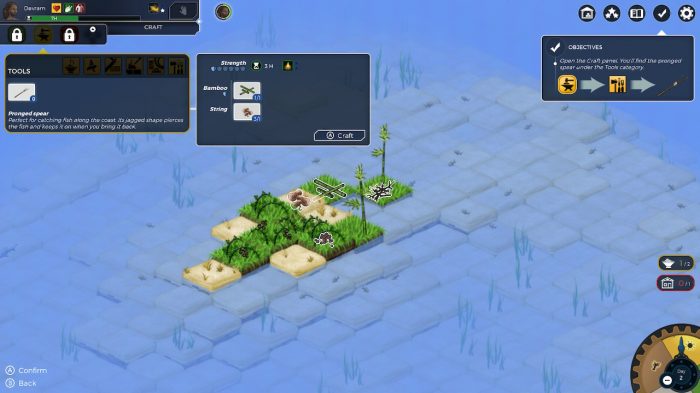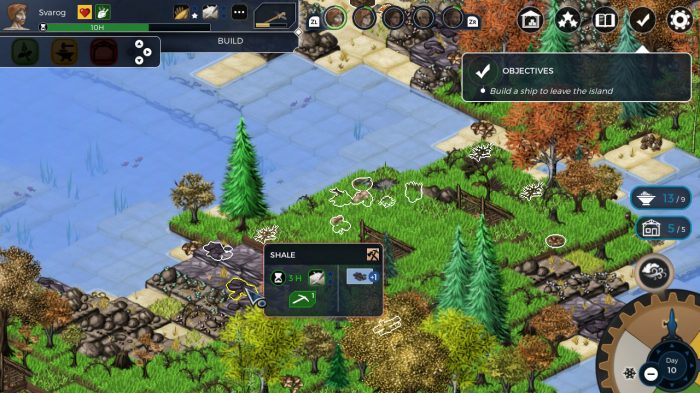I played an awful lot of Seeds of Resilience for this review, although I kind of disliked the experience, despite feeling absolutely compelled to play more. This is going to be tricky to score…
Seeds of Resilience is a fairly bog-standard looking take on the isometric landscape style of game, its twist being that this is a survival-based challenge. So it’s basically Civilization II on a much smaller scale. All the detail has been rendered nicely, and the development team went to great lengths planning and researching their project, which bodes well.

Each turn, the castaways you control will lose health if they’re not warm and fed. The elements (wind, mainly) can damage structures, so you’ll need to gather lots of raw materials, build sets of tools, and unlock a full cast of craftables to assist in the struggle. Each survivor can accomplish a set amount of work per turn, and has their own skillset which improves throughout a run. These details, in conjunction with the wide range of raw materials and possible uses for them, go a long way to creating a challenging and addictive strategy game.
It must be said that not much is really ‘happening’ — at least, not in the eyes of the player, anyway. The action isn’t accompanied by anything more sophisticated than materials flying about the screen when collected, and buildings going up in various stages. The survivors themselves have no representation within the game, except for their initial appearance landing their raft on the island.

It’s a style that gives Seeds of Resilience a very basic ‘board game’ type of a feel, which is by no means a bad thing. The turn-based approach is necessary because there is quite a bit to consider when making each turn, and a lot to keep track of if you want to take full advantage of each character’s traits. A single turn can take many minutes to think about, which can feel quite empowering, and that’s definitely fun.
So, where does it all go wrong? Well, playing Seeds of Resilience is a chore, something a game should never be. The UI is controlled by a confusing combination of joystick and d-pad, it uses icons that aren’t always totally clear, and its menu takes a lot of getting used to. Even after 20 hours of gameplay, I was still struggling to use it.

But the worst sin of all is the terrible, terrible performance of all this. It’s a sad day when even a turn-based strategy game can be ruined by slow performance, but although initial load and the transition after end-of-turn can be bafflingly erratic, it’s the lag that directly affects the UI that really spoils the day. Quite how this release managed to emerge, I can’t imagine. I can’t see anyone playing this game with all the stuttering and pausing — which gets worse the longer you play — and thinking ‘this is fine’, but apparently, it still happened.
And in all those fractions of stolen seconds, I began to think about how even the core gameplay — whilst admittedly playable, even when you’re forcing it — isn’t anything particularly special. At best, the missions start off very easy, then quickly become pleasingly difficult. But the overall challenge of the game doesn’t take too long to learn how to overcome, and after that, it loses much of its interest.
Seeds of Resilience £11.99
Summary
Seeds of Resilience is ultimately a sad disappointment. The core game is compelling, but its major drawbacks – the awkward UI and the sluggish performance – really hold it back from succeeding as an actual game, which is crucial.

